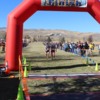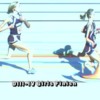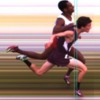I was reading over this thread and thought I'd add a couple comments. First off you want to ask yourself as a timer what do you feel is an appropriate system to be using at an event? Is it going to be an established well known highly accurate product such as a FinishLynx, Omega, IPICO, MyLaps, etc., or is it going to be a homemade product that isn't as well known and probably not as accurate?
To go along with that, with all the time and effort our high school students are putting into their training, their racing, the sacrifices they make as teenagers to become better athletes and competitors, what type of system and level of accuracy and dependability do you feel is going to accurately represent that athletes performance? Many high school athletes are paying mega bucks to compete in sports. When I was in high school it was $25 per season to compete in sports. Now around Seattle students are paying over $200 per sport per season and I know in other parts of the country schools have to pay to be apart of a State XC Series and to compete in post season races. So my question again is what route are you going to take to provide the most accurate results possible that our high school athletes deserve?
There is a big reason why a line scan camera running at 2,000 fps is expensive. Whatever type of camera you are using as your primary timing and scoring camera you want that to be the best camera you have. In my opinion, webcams that can only time to a tenth of a second is a poor system and frankly provides a disservice to our athletes. Even though time in cross country is recorded to the whole second / tenth of a second (chips) or hundredths of a second when a FAT system is used, whatever system you are using to place the runners needs to be able to step frame in my opinion at a minimum 1/1,000ths of a second. So basically a camera that has a minimum 1,000 frames per second or better.
In the image attached, these runners were separated by 0.005 seconds - 5 thousandths of a second. I had my FinishLynx running at 2,000 fps so every frame on my camera is recorded at every 5 ten-thousandths of a second. I feel 2,000 fps is more than adequate for cross country scoring. If my camera was running at a lower speed it would be a lot harder to distinguish a separation between these two runners. I also use two IdentiLynx cameras for identifying bib numbers. Because I don't use a chip system I use multiple IdentiLynx cameras. All three cameras are integrated and shown on a single monitor attached to my PC.
The one thing that I like with the newer Lynx IdentiLynx cameras is you can set the brightness and gain settings so the cameras auto-compensate for glare conditions. I don't know what they were using at the Illinois State Meet but this feature is sure helpful for when the sun shines. In Seattle that doesn't happen very much though. :-)
Here is a YouTube link showing the video from one of the new Lynx IdentiLynx Pro cameras. The video was filmed in 720 HD so make sure to set the YouTube settings to 720 HD.
https://www.youtube.com/watch?v=EyhFAlsVe9cOverall if you want to use a "homemade" system make sure you can justify its use and accuracy versus the other systems out there. Our athletes are working hard to compete. We should be able to reward them with the best equipment possible ensuring their performances are captured with a high level of accuracy.



